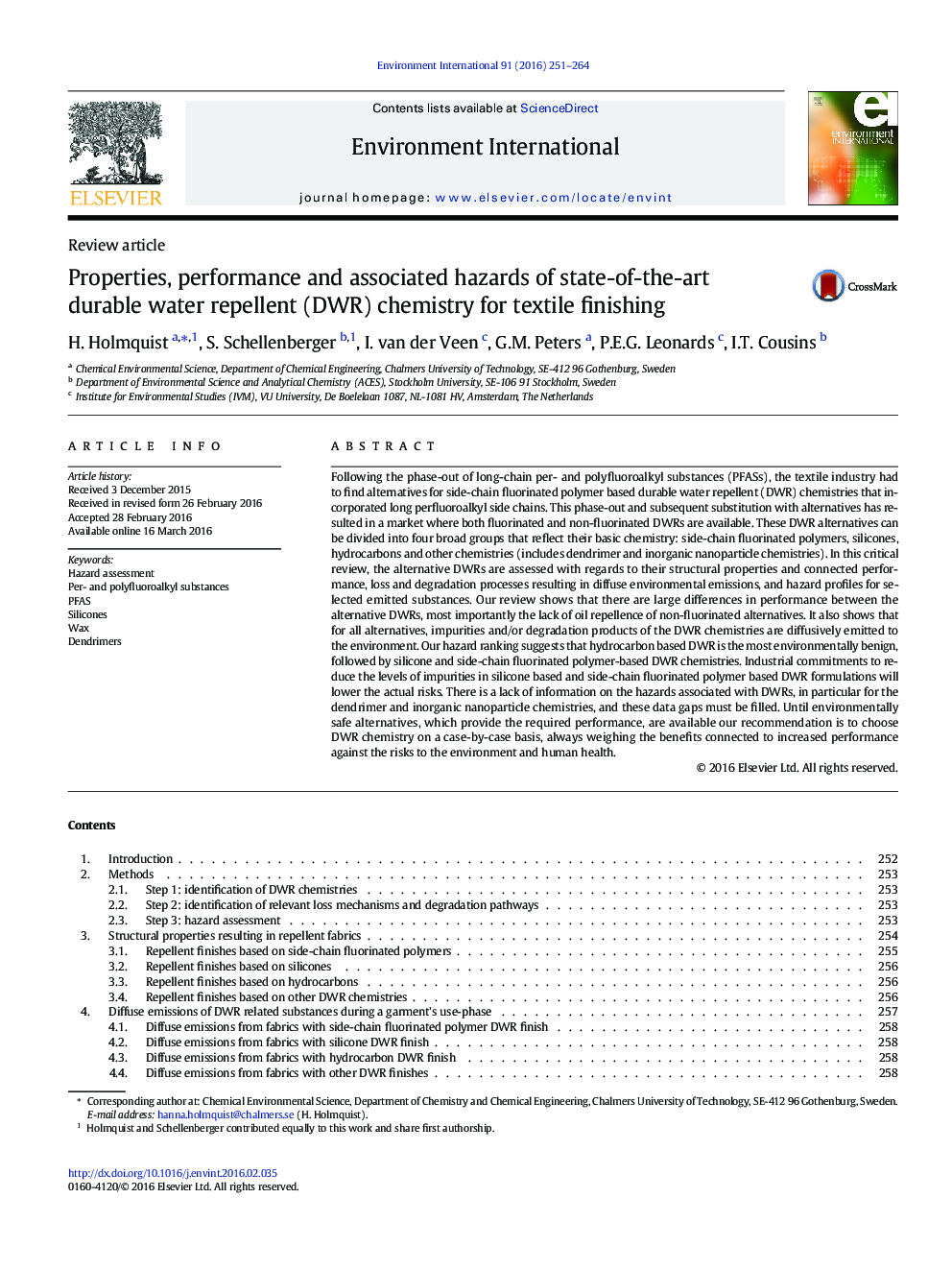| کد مقاله | کد نشریه | سال انتشار | مقاله انگلیسی | نسخه تمام متن |
|---|---|---|---|---|
| 6313220 | 1619038 | 2016 | 14 صفحه PDF | دانلود رایگان |
عنوان انگلیسی مقاله ISI
Properties, performance and associated hazards of state-of-the-art durable water repellent (DWR) chemistry for textile finishing
دانلود مقاله + سفارش ترجمه
دانلود مقاله ISI انگلیسی
رایگان برای ایرانیان
کلمات کلیدی
موضوعات مرتبط
علوم زیستی و بیوفناوری
علوم محیط زیست
شیمی زیست محیطی
پیش نمایش صفحه اول مقاله

چکیده انگلیسی
Following the phase-out of long-chain per- and polyfluoroalkyl substances (PFASs), the textile industry had to find alternatives for side-chain fluorinated polymer based durable water repellent (DWR) chemistries that incorporated long perfluoroalkyl side chains. This phase-out and subsequent substitution with alternatives has resulted in a market where both fluorinated and non-fluorinated DWRs are available. These DWR alternatives can be divided into four broad groups that reflect their basic chemistry: side-chain fluorinated polymers, silicones, hydrocarbons and other chemistries (includes dendrimer and inorganic nanoparticle chemistries). In this critical review, the alternative DWRs are assessed with regards to their structural properties and connected performance, loss and degradation processes resulting in diffuse environmental emissions, and hazard profiles for selected emitted substances. Our review shows that there are large differences in performance between the alternative DWRs, most importantly the lack of oil repellence of non-fluorinated alternatives. It also shows that for all alternatives, impurities and/or degradation products of the DWR chemistries are diffusively emitted to the environment. Our hazard ranking suggests that hydrocarbon based DWR is the most environmentally benign, followed by silicone and side-chain fluorinated polymer-based DWR chemistries. Industrial commitments to reduce the levels of impurities in silicone based and side-chain fluorinated polymer based DWR formulations will lower the actual risks. There is a lack of information on the hazards associated with DWRs, in particular for the dendrimer and inorganic nanoparticle chemistries, and these data gaps must be filled. Until environmentally safe alternatives, which provide the required performance, are available our recommendation is to choose DWR chemistry on a case-by-case basis, always weighing the benefits connected to increased performance against the risks to the environment and human health.
ناشر
Database: Elsevier - ScienceDirect (ساینس دایرکت)
Journal: Environment International - Volume 91, May 2016, Pages 251-264
Journal: Environment International - Volume 91, May 2016, Pages 251-264
نویسندگان
H. Holmquist, S. Schellenberger, I. van der Veen, G.M. Peters, P.E.G. Leonards, I.T. Cousins,